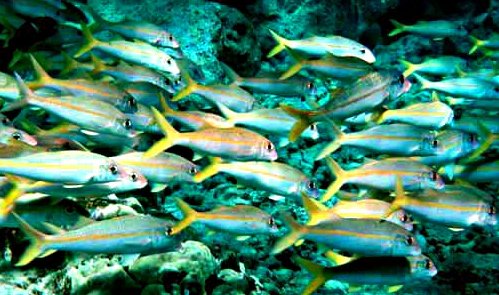2. The Babylonian constellations seem to convey similar ideas:  "Cargo-Boat (Pisces Australis) The mythic function of the Cargo-Boat is probably to transport the souls of new-born children from the ancestral realms towards the realms of living. The 'Cargo' refers to various objects carried in the boat that symbolize the sex of the child - boys are represented by throwing sticks and axes, girls by spindles, hair-clasps and needles. Pabilsag (Sagittarius) Pabilsag is the direct forerunner to the centaur-archer that we know today as Sagittarius. His name can be translated as the 'Chief Ancestor' or 'Forefather', and he can be best compared to the Wild Hunter of western folklore who guides the souls of the dead to the afterlife over the course of the winter months. Goatfish (Capricorn) The Goatfish rises after the winter solstice, when it announces the welcome return of the sun. I believe that the Goatfish is one of the relatively new constellation figures and can be best understood in terms of two older constellations - the Stag which announces the returning sun, and the Fish which guides the sun through the darkness of winter." (Ref.: www.solaria-publications.com)
The Stag constellation is above Field in the picture above.
"A man had a daughter who possessed a wonderful bow and arrow, with which she was able to bring down everything she wanted. But she was lazy and was constantly sleeping. At this her father was angry and said: 'Do not be always sleeping, but take thy bow and shoot at the navel of the ocean, so that we may get fire.' The navel of the ocean was a vast whirlpool in which sticks for making fire by friction were drifting about. At that time men were still without fire. Now the maiden seized her bow, shot into the navel of the ocean, and the material for fire-rubbing sprang ashore. Then the old man was glad. He kindled a large fire, and as he wanted to keep it to himself, he built a house with a door which snapped up and down like jaws and killed everybody that wanted to get in. But the people knew that he was in possession of fire, and the stag determined to steal it for them. He took resinous wood, split it and stuck the splinters in his hair. Then he lashed two boats together, covered them with planks, danced and sang on them, and so he came to the old man's house. He sang: 'O, I go and will fetch the fire.' The old man's daughter heard him singing, and said to her father: 'O, let the stranger come into the house; he sings and dances so beautifully.' The stag landed and drew near the door, singing and dancing, and at the same time sprang to the door and made as if he wanted to enter the house. Then the door snapped to, without however touching him. But while it was again opening, he sprang quickly into the house. Here he seated himself at the fire, as if he wanted to dry himself, and continued singing. At the same time he let his head bend forward over the fire, so that he became quite sooty, and at last the splinters in his hair took fire. Then he sprang out, ran off and brought the fire to the people." (From the Catlo'Itq in British Columbia according to Hamlet's Mill.) |
